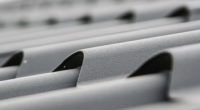
Changing Effective Life of Depreciating Assets
Depreciating assets are assets that have a limited effective life and can reasonably be expected to decline in-value over the time they are used. Depreciating assets include such items as computers, electric tools, furniture and motor vehicles.
Land and items of trading stock are specifically excluded from the definition of depreciating assets. Most intangible assets, except for a few specific exceptions, are also excluded from the definition of depreciating assets (see Tax Strategy 95).
Depreciating assets are written off as a deduction over their effective life. Business owners have the option of using the effective life tables provided by the Australian Taxation Office or calculating the effective life of each asset themselves.
To work out the effective life of a depreciating asset the following information will need to be considered:
- The physical life of the asset.
- The manufacturer’s specifications.
- The business owners own past experience with similar assets.
- The past experience of other users of similar assets.
- The level of repairs and maintenance commonly adopted by users of the asset.
- Retention periods.
- Scrapping or abandonment practices.
If the circumstances relating to a depreciating asset have changed, the business owner can choose at any time to recalculate the effective life of the depreciating asset.





